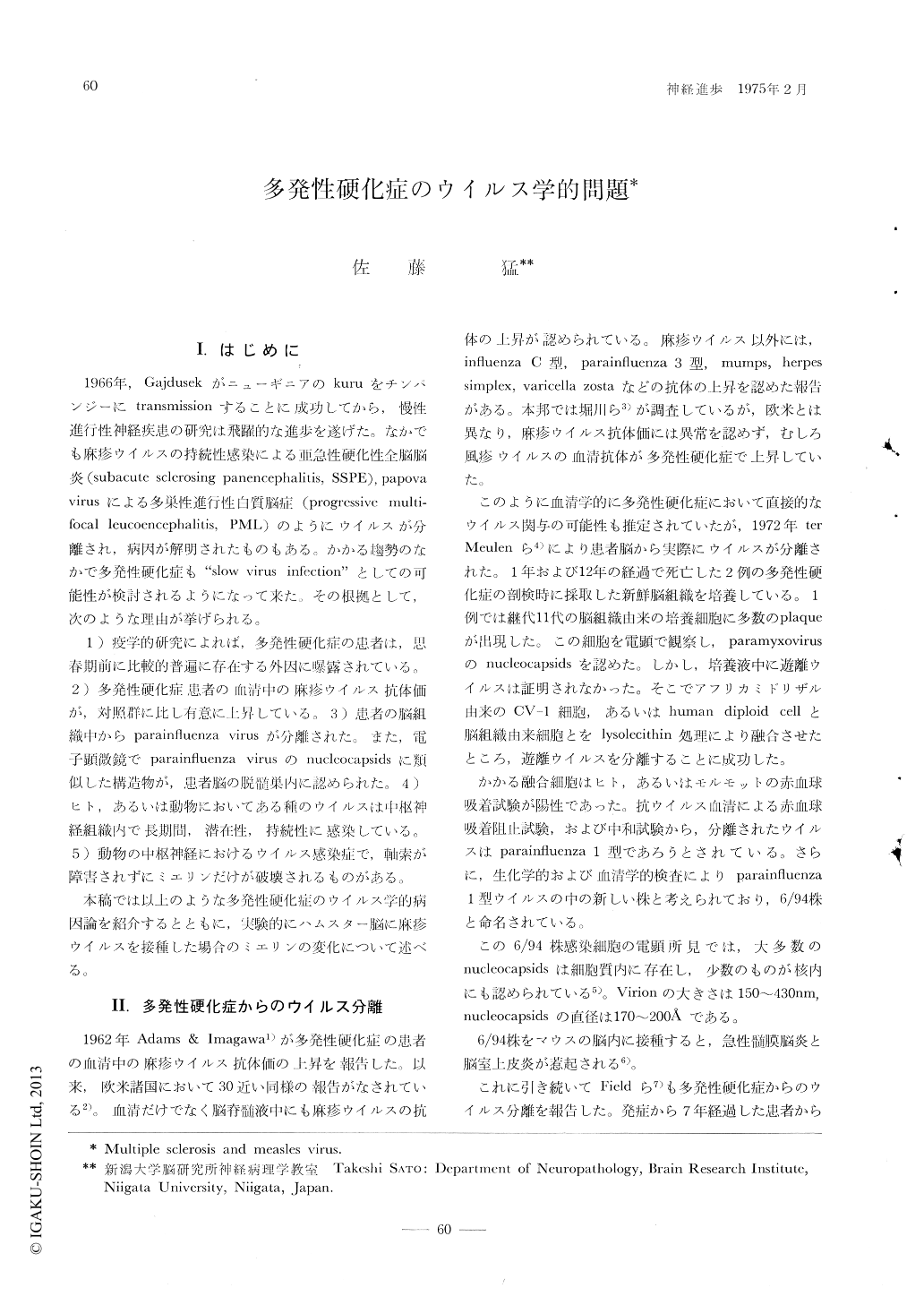Japanese
English
- 有料閲覧
- Abstract 文献概要
- 1ページ目 Look Inside
I.はじめに
1966年,Gajdusekがニューギニアのkuruをチンパンジーにtransmissionすることに成功してから,慢性進行性神経疾患の研究は飛躍的な進歩を遂げた。なかでも麻疹ウイルスの持続性感染による亜急性硬化性全脳脳炎(subacute sclerosing Panencephalitis,SSPE),papova virusによる多巣性進行性白質脳症(progressive multifocal leucoencephalitis,PML)のようにウイルスが分離され,病因が解明されたものもある。かかる趨勢のなかで多発性硬化症も"slow virus infection"としての可能性が検討されるようになって来た。その根拠として,次のような理由が挙げられる。
1)疫学的研究によれば,多発性硬化症の患者は,思春期前に比較的普遍に存在する外因に曝露されている。2)多発性硬化症患者の血清中の麻疹ウイルス抗体価が,対照群に比し有意に上昇している。3)患者の脳組織中からparainfluenza virusが分離された。
Multiple sclerosis may be considered a "slow virus infection", as suggested by evidence that some patients with multiple sclerosis have raised antibody levels against measles, while parainfluenza virus have been isolated from brain cell cultures by ter Meulen et al (1972). The present paper reviewed the possible relationship of multiple sclerosis to measles virus and reported the ultrastructural studies of the degeneration of myelin in hamster brain infected with attenuated measles virus.

Copyright © 1975, Igaku-Shoin Ltd. All rights reserved.


